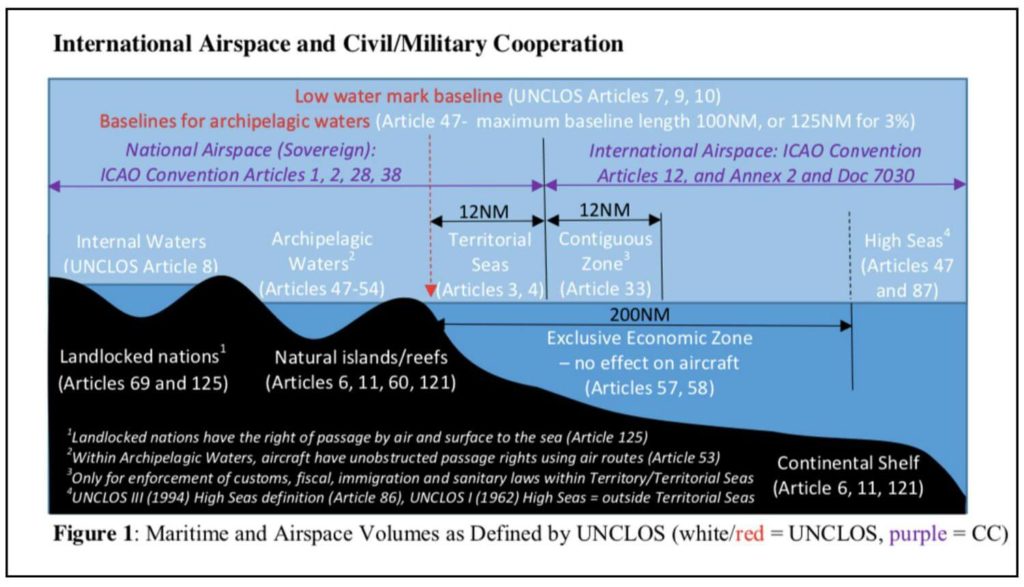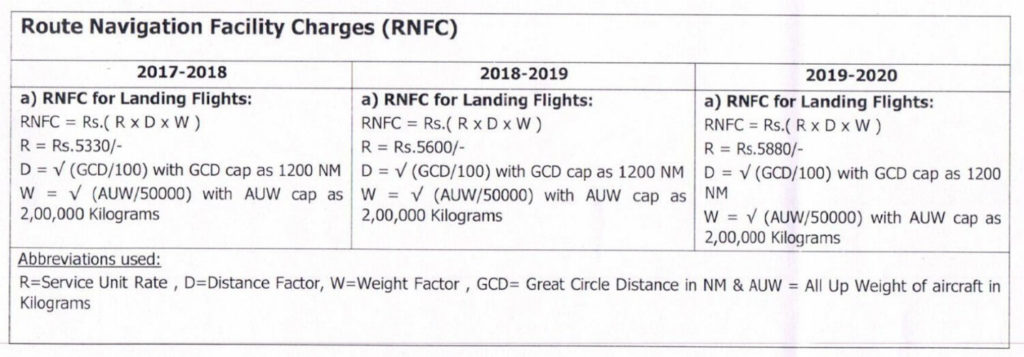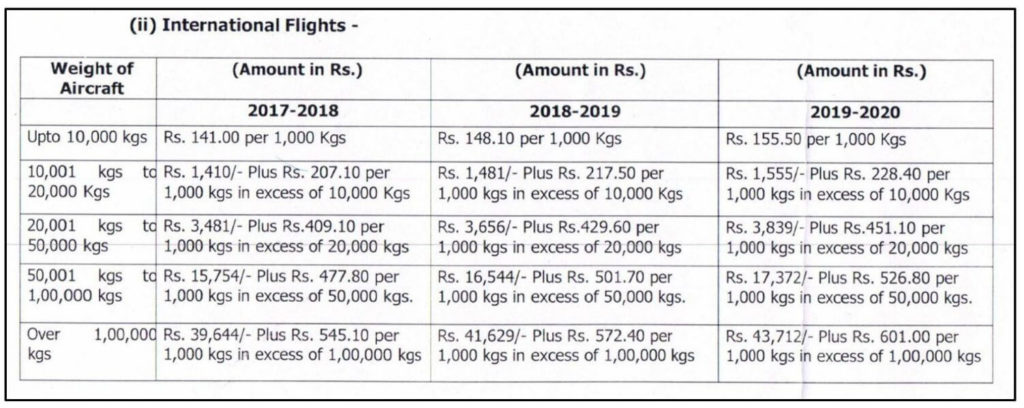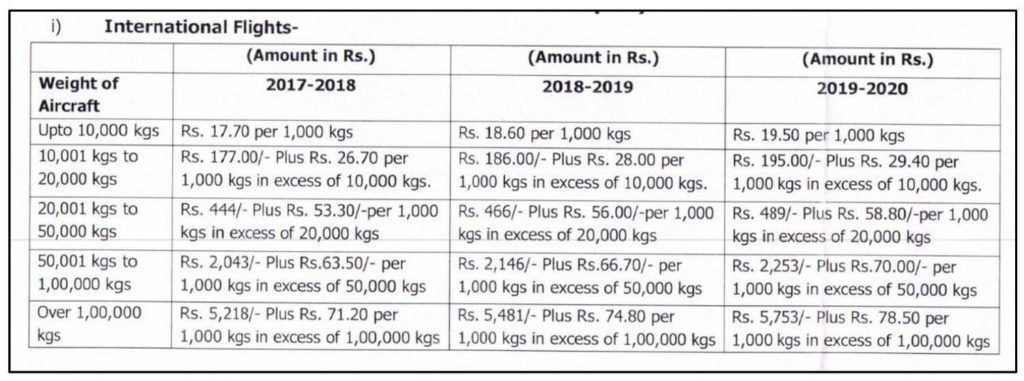[orc]Recently, Pakistan once again closed its Airspace for Indian flights. But who controls Airspace over a country? What are the rules governing such control? Are there charges to be paid for using one’s Airspace? Here is a detailed explainer.
Pakistan has recently denied, the President of India, to use their Airspace for a visit to Europe. In an earlier instance in June 2019, Pakistan decided to allow PM Narendra Modi, to fly over its air space for a trip to Kyrgyzstan after a request from Indian Government, which was later declined by India. These instances occurred in the aftermath of Pakistan closing down its airspace for Indian flights following the Indian Airstrikes in Balakot. Eventually Pakistan has opened up its space for commercial flights in July 2019, which was again partially shut post the abrogation of Article 370 in Jammu & Kashmir.
But, what are rules and regulations around the airspace ownership of a country? What determines the extent to which a country can claim ‘Airspace’? Are there any losses that countries suffer by shutting down their airspace? Here is a detailed explainer.
Control over Airspace determined by territorial extant and mutual agreements
Article 1 of the Convention on International Civil Aviation, with regards to sovereignty of Airspace states that ‘every State has complete and exclusive sovereignty over the airspace above its territory’. Further, the territory of any state includes 12 nautical miles of territorial waters off the coastline. Airspace which is not within any country’s territorial limit is considered as ‘International Airspace’.
The United Nations Convention on the Law of the Sea (UNCLOS) and the Convention on International Civil Aviation (Chicago Convention) define the provisions in regards to Airspace. Countries can make agreements to have control of a section of the International Airspace. For Example, USA has authority over a significant portion of the Pacific Ocean, which is beyond the territorial boundary defined above.

Flight permits required by flights to fly over or to land in a Country’s Airspace.
A Flight permit is the permission which is required by an aircraft to fly over, land or make a stop in the airspace belonging to a specific country. All the countries have their own regulations regarding the issuance of flight permits. Generally, there are charges to be paid by the companies operating these flights for the use of services which could include:
- Route Navigation Facility Charges (RNFC) to be paid for flying over a country’s airspace
- Landing charges and Parking charges
- Terminal Navigation and Landing Charges (TNLC)
Each country has its own regulations to grant these permits and also define their own rate list for extending these services.
There are different types of permits which can be sought based on the purpose of using a country’s airspace.
- Overflight Permit: This permit is taken to enter the airspace of a sovereign country, fly
over it and exit it. All the contracting countries under Convention on
International Civil Aviation (Chicago Convention) permit flights from other countries. However, a prior approval is required before
entering an airspace.
- In certain cases, conflict with the country of origin or destination, outstanding navigation fees etc. could be the reasons for denial of permission for a particular flight.
- Landing Permit: This permit is sought to land at a specific airport.
- Diplomatic Permit: If the aircraft belongs to the government or military, a diplomatic permit needs to be taken. These permits are generally provided by the Ministry of Foreign Affairs of the country the aircraft would be flying over.
Airlines or their respective agents can directly apply for these permits from the respective countries. The charges are billed by the respective national aviation authority to these operators.
In India, the DGCA determines the charges to be levied on International flights for using Indian Airspace
Director General of Civil Aviation (DGCA) is the regulatory body for Civil Aviation in India which discharges various functions including – Certifying the Airports, registration of aircrafts, licensing, formulating standards for air safety, investigating incidents, Coordinating with International Civil Aviation Organization (ICAO) etc.
Meanwhile, the Airports Authority of India (AAI) is the statutory body which is responsible for creating, upgrading , maintaining and managing civil aviation infrastructure in India. It also takes care of Air Traffic Management (ATM) and Communication Navigation Surveillance (CNS) of Indian Airspace.
The DGCA fixes the charges to be levied upon the flights using the Airport Infrastructure for landing or navigation and using Indian Airspace to flyover. As per the amendment to the charges in 2017, the different charges levied on International flights are the following.
Route Navigation and Facility Charges (RNFC) are one of the prominent charges paid by the flights while flying over a country’s airspace.

The Landing charges levied on international flights for landing in Indian Airspace are displayed in the following image.

Separate charges are levied on international flights for using Terminal Navigation and Landing services in International Airports. The following charges are applicable at Delhi, Mumbai, Chennai, Kolkata, Trivandrum, Bengaluru, Hyderabad, Goa & Cochin airports.

In airports other than those mentioned above, the following charges would be applicable for international flights.

Apart from RNFC and TNLC, charges are levied on air carriers using services like Housing, Parking and Night Parking services.

Loss and additional expenses incurred by both India and Pakistan because of Airspace shutdown by Pakistan.
Shutting down of the airspace has a negative effect on both sides i.e. the country who has shut down the airspace and those countries whose flights have to look for longer alternative options.
Similar to the charges levied by DGCA for using Indian airspace for various services, Pakistan Civil Aviation Authority (PCAA) levies charges on the flights using Pakistan’s airspace. Indian flights are one of prominent users of Pakistan’s Airspace and many international flights use its Airspace to reach India.
Pakistan’s Federal Minster for Aviation addressing a Press conference in July 2019 stated that PCAA suffered a loss of ₹ 8.5 billion (USD 50 million) because of Airspace restrictions since February 2019.
Indian flights also had to bear extra costs because of rerouting the flights. Answering a supplementary question in Rajya Sabha on 17 July 2019, the government mentioned that Air India has suffered a loss for ₹ 430 crores over the four-month period when Pakistan closed its airspace.
Featured Image: Rights over Airspace



1 Comment
Pingback: Explainer: Who holds rights over Airspace? - Fact Checking Tools | Factbase.us